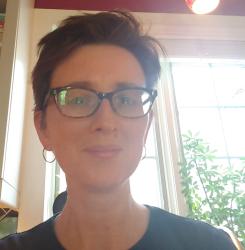In Genesis 1:27, we read the following: “God created mankind in his image; in the image of God he created them; male and female he created them.” We are beings inextricably linked to God, yet we are constantly striving to separate ourselves from our Creator. It’s part of our primeval rebellion (“you will be like god knowing good and evil”), and it’s something that has become a rather significant part of our nature.
Given our source, we have a free will from which flows all kinds of creation and, unfortunately, destruction. What happens when we continue our rebellion against God and start re-creating ourselves? Is the creation of a new identity an act of rebellion or something else? Where does an identity come from anyway? Is it something suggested to us by our environment, or does it depend on our individual personalities? These are some of the questions that Tara Isabella Burton asks, and attempts to answer, in her new book, Self-Made: Creating Our Identities from Da Vinci to the Kardashians.
Part historical survey and part cultural criticism, Self-Made makes the argument that there is not much difference between Albrecht Dürer and Kim Kardashian, at least when we consider some of the ways in which we understand the meaning of the self. According to Burton, we are always trying to be divine, whether we believe in God or not. While the medieval mindset always had God as the center of thought and life, the Renaissance ushered in a different set of metaphysical priorities, which have been getting stronger as we’ve moved from one age to the next.
Denying the notion that we’ve become a nation of formerly religious secularists, Burton writes:
We have not so much done away with a belief in the divine as we have relocated it. We have turned our backs on the idea of creator-God, out there, and instead placed God within us—more specifically, within the numinous force of our own desires. Our obsession with self-creation is also an obsession with the idea that we have the power that we once believed God did: to remake ourselves and our realities, not in the image of God but in that of our own desires.
I’m inclined to agree with Burton, although as our culture has turned away from the God out there and we’ve turned in on ourselves, we’ve seen a warping of our view of reality, one made worse by our obsession with technology, with our constantly staring into the “black mirror” of the consumer-driven devices.
Many of the historical figures and events that Burton singles out in her book have to do with attempts to become “free” from former constraints. Trying to release ourselves from God, religion, and morality, we wish to forge not just a new path but a new self. But this new self is not a being who delights in God’s creation or even finds joy in one’s own creation to the glory of God. Rather, almost all of Burton’s historical examples highlight narcissists who prefer pleasure to joy, which is perceived as an actual impediment to self-re-creation. The highest quality of life depends purely on the attainment of a certain kind of “freedom.” As Burton writes, “A human being … must untether himself from all those elements of custom—birth and blood, to be sure, but also religious superstition and unexamined social mores—that alienate him from his true, natural state.” This is where true freedom lies; at least according to the Enlightenment mindset.
One of the ways we have attempted to distinguish ourselves and make a statement of personal freedom is through fashion. Burton examines the life of a fascinating man, George Bryan Brummel, an English dandy who in the early 1800s was most definitely the talk of the town—or at least London. Brummel created a unique persona that he used to get money, clothes, and food, hobnobbing with the English elite and royalty. What made Brummel fascinating was “his tendency toward haughty indifference. He had a bored nonchalance that implied that even a snub from the prince of Wales himself could not penetrate his emotional armor. A godlike disengagement—a freedom from and superiority to other people, even princes—was necessary for the person who wanted to truly create himself anew.”
Burton’s wonderful and colorful portrait of Brummel will certainly make one despise the man simply because he appears to have no purpose or mission in life except to experience self-centered pleasure. He’s a fake in a society of wanna-be blue bloods. But there is more to Brummel’s story than Brummel himself. What was the nature of the hold he had on his society? Was his “power” merely a superficial societal impact mostly felt in fashionable trends, or was it something deeper, affecting economics? Burton correctly observes that Brummel “was less original than he might at first glance appear. Rather, Brummel’s talent lay in his ability to channel and manipulate the tensions of his time, to gain a monopoly, as it were, on this burgeoning concept of bon ton [“good tone” or “high society”].”
In other words, almost everything in Brummel’s world revolved around hierarchy. Where you came from determined the possibilities of success in life, band it is this concept of “bon ton” that helped Brummel propel himself into a societal strata he may not otherwise have been allowed into. As Burton writes, those who had “bon ton” “belonged to a special, elite class of persons. They were members not only of literal, hereditary aristocracy but, perhaps even more importantly, of an aristocracy of style.” In some ways, Brummel was the vehicle to something we might call today “social currency”—a rather shallow way of being and relating to the world.
“Ideas have consequences,” Richard Weaver wrote, and even bad ideas can energize people. Wishing for a more enlightened existence that leaves God behind can have grave consequences. With man as the measure of all things, as the Renaissance promised, we are back where we started: Genesis.
While one can make the argument that there’s a “self-made” thread binding, say, the Marquis de Sade and Kim Kardashian, and though Burton navigates through cultures high and low quite well, the chapter on Frederick Douglass appears to be weirdly out of place. She singles out Douglass’ contribution to the idea of “self-making,” and that for Douglass it is through hard work that man is able to re-create himself. As Burton writes, “Self-making, for Douglass, was not simply a privilege afforded to those imbued with an innate gift, as the thinkers of the Renaissance believed. … Self-making was an act anyone could participate in, so long as they were willing to work hard.”
Of course, for Frederick Douglass to say that the way to become who you are is through work is startling and unique, given that he was once literally a slave. For him, freedom was intertwined with work, but work was never to be divorced from one’s basic humanity, and most importantly community. The creation of the self was to be done in concert with God through both action and contemplation, and a genuine freedom.
The Founding Fathers were of this mindset as well. Although they differed in personalities and even in their conception of a truly moral society, they understood that the self-made man is not someone who must free himself from a given set of moral principles (something we see later most prominently in Nietzsche) but must be free to be guided by the divine order of things.
Burton’s examination of Douglass’ life, finally, teeters on the verge of dismissing altogether the idea of the American Dream and every American’s right to the “pursuit of happiness.” By placing Douglass as just a counterpart to someone like Brummel, Burton minimizes the metaphysical, political, and spiritual significance of Douglass.
Although I favor approaching cultural criticism by comparing and contrasting high and low culture, there are moments in intellectual and political history that point to the importance of preserving one’s God-given human dignity and celebrating achievements that transcend the historical moment, that escape any facile reductionist analysis. Douglass personified such dignity and accomplishment, as did the Founders, and there is a sense of the sacred in what they did that ought not to be equalized with the profane and fleeting.
Burton’s thesis is that we all brand ourselves and that this has been going on for centuries. Who is a fake and who is real? In today’s internet culture, it is becoming harder and harder to discern whom we can trust, what is authentic or true, especially in the media. Intellectual life has almost disappeared because of a parade of pseudo-intellectuals peddling ideas they hardly understand under the guise of “expertise” that is little more than what can be fostered by their “influencer” status. Anything (and anyone) can become trademarked and reduced to a mere gimmick, yet one that can go “viral,” ushering in a Warholian 15 minutes of fame. It may get a lot of attention at first, but soon everyone tires of it and goes looking for another “god” and another “gimmick.”
Self-Made is an excellent historical survey of people who have explored the very meaning of personal freedom, even if indulging in purely narcissistic visions of the self. The book slightly falters because it doesn’t get into deeper philosophical and theological questions (although they are briefly alluded to in the introduction and conclusion of the book), remaining a cultural history only rather than one of ideas and their roots. To be sure, Burton’s intent is to show the threads that bind a variety of personae together: their intentions, passions, thoughts, and actions. The reader will learn about many figures who have become unfairly obscure, and Burton superbly navigates their stories via detailed historical research. But the question of human authenticity still remains: Who is fake and who is real? How do we define reality to begin with? Most importantly, what is human singularity and authenticity in relation to God? This last question especially deserves our continuous attention.

